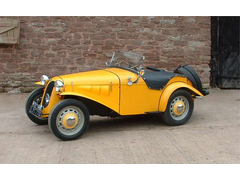johnemms
|
| posted on 1/9/06 at 10:43 AM |

|
|
Ali Pannel - Glue it first?
Ok... dont laugh...
Water based 'Hard as Nails' in a gun.. bond side or back pannel in place and wait to dry
Once cured bend edges over chassis and drill n rivet...
Any problems with that ???
Cheers
jon
|
|
|
|
|
David Jenkins
|
| posted on 1/9/06 at 10:48 AM |

|
|
I used Sikaflex (or similar PU glue) to seal the rear panel on my car, before I riveted. Nice and strong and keeps the water out - fine.
Then I decided to strip off the panel as I wasn't happy with it - bl**dy hard work!
So:
It's a good idea to use a sealant to keep the water out, and to prevent electrolytic corrosion.
Structurally, my own opinion is that any form of glue is unnecessary, and may make future repairs difficult.
However, I am sure that others will disagree, especially with the second point! 
Adhesive sealant may be useful for helping to fix the floor (as long as you're not welding it, that is!)
David
|
|
|
John Bonnett
|
| posted on 1/9/06 at 11:10 AM |

|
|
I think the only panel that is structural is the floor and as David says, if it is not welded in then bonding with a panel adhesive as well as
rivetting will add strength to the chassis. As far as the sides are concerned I don't think adhesive is necessary. I have owned two 40 year old
Dellows and as far as I remember the side panels were not even rivetted they were dressed around the round chassis tube and that was quite sufficient.
There can be a problem with electrolytic corrosion between aluminium and steel but if the chassis is painted this should provide a degree of
insulation.
John
 
Rescued attachment MK1.jpg
|
|
|
RazMan
|
| posted on 1/9/06 at 12:11 PM |

|
|
Don't wait for the sealant / adhesive to dry before rivetting - best to pull the panels up tight while it is still flexible as you will get a
closer fit.
The best way imo:
1. Predrill all holes using cleko pins for location
2. Remove panel & deburr
3. Apply PU adhesive
4. Fit & Rivet using cleko pins.
5. Clean off excess adhesive with meths (or you can cut it off with a sharp knife when set)
Cheers,
Raz
When thinking outside the box doesn't work any more, it's time to build a new box
|
|
|
russbost
|
| posted on 1/9/06 at 06:57 PM |

|
|
I wouldn't use hard as nails as it's not flexible. Bonding panels as well as rivetting helps to stop vibration & annoying
"tizzing" noises
I no longer run Furore Products or Furore Cars Ltd, but would still highly recommend them for Acewell dashes, projector headlights, dominator
headlights, indicators, mirrors etc, best prices in the UK! Take a look at http://www.furoreproducts.co.uk/ or find more parts on Ebay, user names
furoreltd & furoreproducts, discounts available for LCB users.
Don't forget Stainless Steel Braided brake hoses, made to your exact requirements in any of around 16 colours.
http://shop.ebay.co.uk/furoreproducts/m.html?_dmd=1&_ipg=50&_sop=12&_rdc=1
|
NOTE:This user is registered as a LocostBuilders trader and may offer commercial services to other users
|
caber
|
| posted on 1/9/06 at 09:41 PM |

|
|
Electrolytic corrosion between steel and Aluminium is a serious problem, look at any aged land Rover or Range Rover. The door frames are passivated
steel and a flexible strip is put between aluminium door skin and frame. After several years water will get between them and the panel bubbles and
rots. If you intend to keep your car for a long time I would use sikaflex over a well painted steel frame, at least that's what I am doing!
Caber
|
|
|













